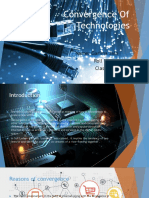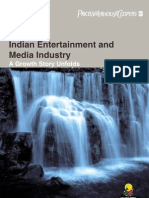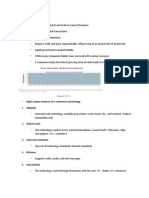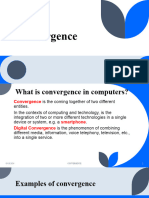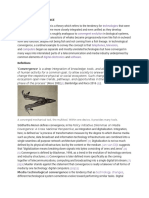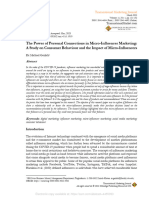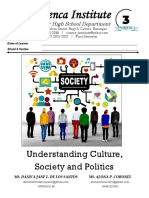0% found this document useful (0 votes)
234 views3 pagesConvergence & Its Types
Convergence in new media integrates various platforms and technologies, significantly impacting content creation and consumption. It includes types such as technological, operational, and content convergence, which have transformed user behavior, accessibility, and advertising strategies. The synergy between electronic and mobile commerce enhances shopping experiences through mobile apps, payments, and personalized services, while future trends like AI, immersive technologies, and blockchain will continue to shape the media landscape.
Uploaded by
parvdhingra1Copyright
© © All Rights Reserved
We take content rights seriously. If you suspect this is your content, claim it here.
Available Formats
Download as DOCX, PDF, TXT or read online on Scribd
0% found this document useful (0 votes)
234 views3 pagesConvergence & Its Types
Convergence in new media integrates various platforms and technologies, significantly impacting content creation and consumption. It includes types such as technological, operational, and content convergence, which have transformed user behavior, accessibility, and advertising strategies. The synergy between electronic and mobile commerce enhances shopping experiences through mobile apps, payments, and personalized services, while future trends like AI, immersive technologies, and blockchain will continue to shape the media landscape.
Uploaded by
parvdhingra1Copyright
© © All Rights Reserved
We take content rights seriously. If you suspect this is your content, claim it here.
Available Formats
Download as DOCX, PDF, TXT or read online on Scribd
/ 3

























